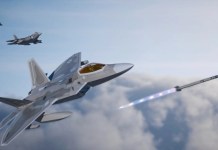The US-led NATO has declared the initial operational capability (IOC) for its fleet of Northrop Grumman RQ-4D Phoenix drones, the intergovernmental military alliance said in a statement.
The fleet of five high-altitude long-endurance (HALE) drones will now be ready for NATO’s intelligence-gathering operations.
Equipped With Turkish Bombs, Are Airbus Jets Getting Overhauled For Strike Missions?
The IOC of the RQ-4D Phoenix drones was announced by NATO’s Supreme Allied Commander General Tod Wolters, the alliance said on February 15. NATO had purchased five RQ-4D aircraft, in addition to ground control units and support equipment.
The announcement comes days after the arrival of the final NATO Alliance Ground Surveillance (AGS) aircraft in Sigonella, Italy.
The AGS system was developed by a Northrop Grumman-led team comprising members from Italian aerospace giant Leonardo and Norwegian aerospace company Kongsberg. It has been designed to take a comprehensive image of the ground situation.
SACEUR General Tod Wolters, declared the #NATO AGS RQ-4D remotely piloted aircraft initially operationally ready to conduct missions.
SACEUR called this "a significant milestone towards improved sensing of the environment."RT and learn more here https://t.co/JDBoMhEEDA pic.twitter.com/05eIpCVW7F
— SHAPE_NATO Allied Command Operations (@SHAPE_NATO) February 15, 2021
The three aerospace firms brought their resources together to develop the AGS system, which uses five aircraft, sensors, and support systems to perform surveillance missions.
“The entire AGS team partnership…has shown incredible dedication, working across cultures, time zones and languages, all aiming toward one goal – providing the alliance with this critical capability,” said Jane Bishop, vice president and general manager for autonomous systems at Northrop.
According to a statement released by NATO, the purpose of the drone fleet is to “substantially increase the Alliance’s awareness, indications and warnings of what is happening around its borders”.
? NATO Alliance Ground Surveillance declared ready to conduct missions.
So what is AGS?@SHAPE_NATO | #NATO pic.twitter.com/CTMfQCoYTn
— NATO (@NATO) February 15, 2021
The NATO RQ-4D drones, which are based on the United States Air Force’s RQ-4 block 40 Global Hawk, will perform a host of roles including force protection, border security, disaster response, and crisis management operations.
The advanced drones will share intelligence, surveillance, and reconnaissance (ISR) information with all 30 members of the NATO alliance.
One of the features of the RQ-4D Phoenix drones is the ability to fly for more than 32 hours at up to 62,000 feet. Each drone carries ISR sensors, such as electro-optical/ infrared cameras and synthetic aperture radar for taking photos over a wide area of the ground.
Sigonella will be the region from where the UAVs will be piloted remotely for the operations of the NATO members. The Phoenix drones will be NATO-owned and operated.
Aside from the Phoenix drones, NATO also owns and operates a mix of different aircraft. These include a fleet of Boeing E-3A Airborne Warning & Control System aircraft, Boeing C-17 Globemaster III cargo aircraft and Airbus A330 Multi Role Tanker Transport aircraft.
“This unique, multinational capability, paired with a team of Allied specialists who process, evaluate, and distribute intelligence provides NATO decision-makers with timely and relevant information,” says Major General Phillip Stewart, Strategic Employment Directorate commander with Supreme Headquarters Allied Powers Europe.
Follow EurAsian Times on Google News




